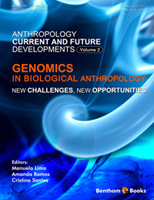

This fourth edition of the best-selling textbook, Human Genetics and Genomics, clearly explains the key principles needed by medical and health sciences students, from the basis of molecular genetics, to clinical applications used in the treatment of both rare and common conditions. A newly expanded Part 1, Basic Principles of Human Genetics, focuses on introducing the reader to key concepts such as Mendelian principles, DNA replication and gene expression. Part 2, Genetics and Genomics in Medical Practice, uses case scenarios to help you engage with current genetic practice.
Now featuring full-color diagrams, Human Genetics and Genomics has been rigorously updated to reflect today’s genetics teaching, and includes updated discussion of genetic risk assessment, “single gene” disorders and therapeutics. This fourth edition of the best-selling textbook, Human Genetics and Genomics, clearly explains the key principles needed by medical and health sciences students, from the basis of molecular genetics, to clinical applications used in the treatment of both rare and common conditions.A newly expanded Part 1, Basic Principles of Human Genetics, focuses on introducing the reader to key concepts such as Mendelian principles, DNA replication and gene expression.
DescriptionA Primer of Human Genetics is an introductory textbook designed to give students the foundation they need to understand and appreciate the extraordinary shifts in human genetics that have accompanied the arrival of genomics. The book lays out the key concepts of human evolution, quantitative genetics, and personalized medicine before describing the tools that are missing from most contemporary textbooks: genome-wide association studies, whole-genome resequencing, gene expression and epigenome profiling, and integrative genomics.
Human Genetics Books Pdf

The final section provides an up-to-date survey of specific findings in six major domains of human disease: immunological, metabolic, cardiovascular, cancer, neuropsychological, and aging disorders. After reading this textbook, not only willstudents be better equipped to read current literature, they will gain a sense of the impact that the revolution in genomics has had for our understanding of the human condition, as well as of the major trends in human genetics research. Students are assumed to have a core understanding of genetics such as would be obtained in a general genetics class. Each chapter is approximately 20 pages long, and organized under up to ten sub-headings, most of which incorporate an illustrative figure. Chapter summary points recap the key messages, and references point students to key reviews and contemporary highlights. Several of the chapters contain a single box, which provides extra material on topics such as 'Consent and Responsible Conduct of Research' and 'Methylation Analysis inBiology.' For Instructors Instructor's Resource Library Available to qualified adopters, the Instructor's Resource Library includes electronic versions of all of the textbook's figures, photos, and tables.
All images are provided as both low- and high-resolution JPEGs, and have been formatted and optimized for excellent legibility and projection quality. In addition, a ready-to-use PowerPoint presentation of all figures and tables is provided for each chapter of the textbook. About the Author(s)Greg Gibson is Professor and Director of the Center for Integrative Genomics at the Georgia Institute of Technology, and holds an adjunct appointment at Emory University School of Medicine. He earned a Bachelor's Degree in Biology at the University of Sydney and a Ph.D.
In Cell Biology at the University of Basel (with Walter J. He worked for 15 years with the fruitfly Drosophila melanogaster, mostly while at North Carolina State University, during which time he wrote A Primer of Genome Science with Spencer Muse. Gibson serves on the editorial boards of several leading journals, and is a Fellow of the American Association for the Advancement of Science. His current research is in quantitative genetics and genomics, focusing on environmental and geneticsources of human variability, the regulation of gene expression in immunogenomics, and predictive health. Reviews'This text excites the avid student to pursue research in genetics by providing insightful resources in a concise manner. Additionally, this text hits the mark on providing emerging methods and technologies into a quick reference with appended summary bibliography at the end of each chapter.
The illustrations are clear and convey the overall broad aims without getting into the minutiae. The author does a great service to the field by providing this informative resource.'
Johnson Chavarria, Yale Journal of Biology and Medicine. Table of ContentsPART I. FOUNDATIONS 1. Conceptual Foundations 2. The Human Genome 3.
Human Evolution 4. Normal Variation 5. Personalized Genomics PART II. Genome-Wide Association Studies 7.
Whole-Genome and Whole-Exome Sequencing 8. Gene Expression Profiling 9. The Epigenome 10. Integrative Genomics PART III. Immune-Related Disease 12.
Metabolic Disease 13. Cardiovascular Disease 14. Cancer Genetics 15. Neurological and Psychiatric Disorders 16. Genetics of Aging Glossary Index.